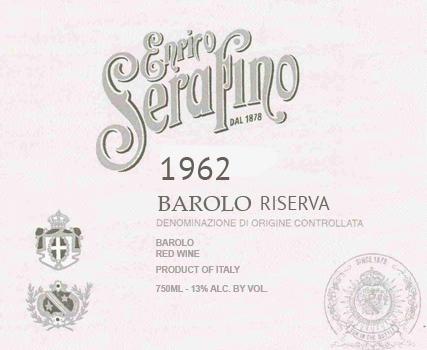1962 Barolo Red Blend
Enrico Serafino Riserva from the Barolo region is a captivating red blend that showcases the rich heritage of this esteemed area. With a deep, ruby red hue, this wine exudes an inviting allure that entices the senses. The body is robust and well-structured, reflecting the complexity of its vintage. It possesses a notable acidity that enhances its liveliness, making each sip a delightful experience. The fruit intensity is prominent, offering layers of dark berry flavors intertwined with hints of dried herbs and subtle earthiness. Tannins are firm yet elegant, contributing to the wine's age-worthiness and ensuring a smooth finish. This Riserva is dry, perfectly complementing its rich character and making it a remarkable companion for hearty dishes or a cozy evening by the fire.
Enrico Serafino Riserva from the Barolo region is a captivating red blend that showcases the rich heritage of this esteemed area. With a deep, ruby red hue, this wine exudes an inviting allure that entices the senses. The body is robust and well-structured, reflecting the complexity of its vintage. It possesses a notable acidity that enhances its liveliness, making each sip a delightful experience. The fruit intensity is prominent, offering layers of dark berry flavors intertwined with hints of dried herbs and subtle earthiness. Tannins are firm yet elegant, contributing to the wine's age-worthiness and ensuring a smooth finish. This Riserva is dry, perfectly complementing its rich character and making it a remarkable companion for hearty dishes or a cozy evening by the fire.




